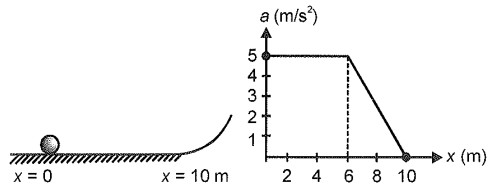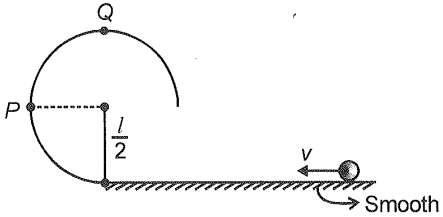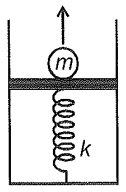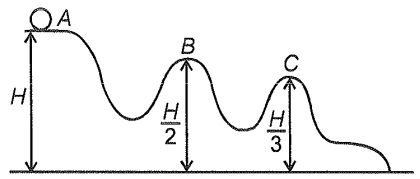The potential energy of a particle of mass \(1\) kg free to move along the \(X\text-\)axis is given by \(U(x) = (3x^2-4x+6)~\text{J}\). The force acting on the particle at \(x=0\) will be:
1. \(2\hat i~\text{N}\)
2. \(-4\hat i~\text{N}\)
3. \(5\hat i~\text{N}\)
4. \(4\hat i~\text{N}\)
The potential energy of a particle of mass m varies as The magnitude of the acceleration of the particle at (0, 3) is (symbols have their usual meaning)
1.
2.
3.
4. Zero
A ball of mass 100 g at rest is thrown on a horizontal surface as shown in the figure. The acceleration-displacement graph for the motion is given. The maximum height attained by the ball on the smooth inclined plane is

(1) 10 m
(2) 4 m
(3) 2 m
(4) 1 m
A body moving with speed 10 m/s is stopped by applying constant braking power in 5 seconds. If the speed of the body is 30 m/s, then time in which the body can be stopped by applying the same retarding power is
(1) 10 s
(2) 15 s
(3) 30 s
(4) 45 s
1. \(250~\text{J}\)
2. \(200~\text{J}\)
3. \(150~\text{J}\)
4. \(500~\text{J}\)
A small ball is given a velocity on the smooth horizontal floor which leads to a smooth vertical circular path. The ball will Smooth

(1) complete the loop.
(2) reach only up to point P.
(3) reach to point Q.
(4) leave the contact somewhere between P and Q.
A vertically compressed spring of constant k releases a ball of mass m as shown in the figure. The maximum height attained by the ball from the compressed point is (x is the initial compression in the spring)

1.
2.
3.
4.
Work done the spring force in a time interval maybe
(1) Positive
(2) Negative
(3) Zero
(4) All of these
A ball of mass m at rest starts moving from point A. The irregular surface is frictionless. The speed of the ball at the point C on the track is

1.
2.
3.
4. Zero
A ball is allowed to fall from a height of 10 m. If there is a 40% loss of energy due to impact, then after one impact ball will go up by
(1) 10 m
(2) 8 m
(3) 4 m
(4) 6 m






